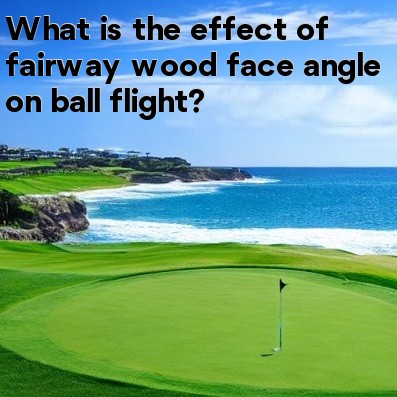
Fairway wood face angle has a significant effect on ball flight in golf. The face angle refers to the direction in which the clubface is pointing relative to the target line. An open face angle means the face is pointing to the right of the target, while a closed face angle means the face is pointing to the left of the target.
When it comes to fairway woods, the face angle determines the initial direction the ball will take once it is struck. A square face angle, where the face is pointing directly at the target, will result in a straight shot. However, in most cases, golfers will have some degree of open or closed face angle at impact.
If the face angle is open, the ball will tend to start out to the right of the target and then curve further to the right. This is known as a fade or slice. Conversely, if the face angle is closed, the ball will start out to the left of the target and then curve further to the left. This is known as a draw or hook.
The effect of the face angle on the ball flight depends on a golfer's swing path as well. If a golfer's swing path is also open to the target, an open face angle will exaggerate the slice or fade. Conversely, if the swing path is closed, a closed face angle will enhance the draw or hook. Therefore, it is important for golfers to understand their swing path in relation to the face angle.
Adjusting the face angle can help golfers correct and control their ball flight. For individuals experiencing a consistent slice, closing the face angle slightly can help straighten out the shot. On the other hand, if a golfer tends to hook the ball, opening the face angle slightly can help reduce the degree of the hook.
It is also important to note that different fairway wood lofts can affect the effective face angle. Higher lofted fairway woods tend to have a more closed face angle, while lower lofted fairway woods tend to have a more open face angle. Golfers should consider the loft of their fairway wood when assessing the face angle and its impact on ball flight.
Ultimately, achieving the desired ball flight with fairway woods requires experimentation and practice. Golfers should utilize both swing adjustments and equipment adjustments to find the right balance of face angle and swing path. Working with a professional coach or club fitter can also provide valuable insights into optimizing the face angle for consistent and accurate ball flight.
- In conclusion, the face angle of fairway woods significantly affects ball flight in golf.
- An open face angle leads to a fade or slice, while a closed face angle produces a draw or hook.
- The consistency of the golfers' swing path in relation to the face angle plays a crucial role in shot shape.
- Adjusting the face angle can help correct and control ball flight, depending on the golfer's tendencies.
- Higher lofted fairway woods generally have a more closed face angle, while lower lofted fairway woods have a more open face angle.
- Experimentation, practice, and professional guidance are essential to finding the optimal face angle for desired ball flight.





